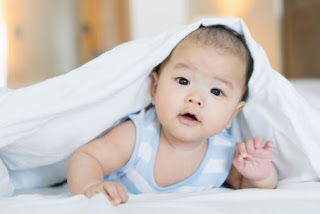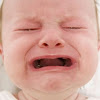 Teething rash is often complained by mother when their babies get grow especially teething. The teething usually happens when your baby age turns. You can see their smiles with growing teeth. In six months, it is a sign that teething process is started. Your baby teeth will see. Basically, your baby is born with a series of main teeth. But, the teeth don’t look yet. The teeth will grow when your baby turn to 6 months.
Teething rash is often complained by mother when their babies get grow especially teething. The teething usually happens when your baby age turns. You can see their smiles with growing teeth. In six months, it is a sign that teething process is started. Your baby teeth will see. Basically, your baby is born with a series of main teeth. But, the teeth don’t look yet. The teeth will grow when your baby turn to 6 months.Teething Rash | Can Teething Cause A Skin Rash?
 The first tooth penetrating lower and upper gum is usually in pairs. The upper teeth generally grow first depending on the upper part. The growth of teeth makes your baby painful so that it makes her uncomfortable. Most of the parents claim that it is causing teething rash. The teething makes skin rash. Can teething cause a skin rash? You can see the following symptoms of teething for a baby.
The first tooth penetrating lower and upper gum is usually in pairs. The upper teeth generally grow first depending on the upper part. The growth of teeth makes your baby painful so that it makes her uncomfortable. Most of the parents claim that it is causing teething rash. The teething makes skin rash. Can teething cause a skin rash? You can see the following symptoms of teething for a baby.• Baby’s Saliva Dripping with Rash
You don’t get surprised when your baby’s saliva is dripping when the teeth firstly grow. This is a general condition faced by your baby when teething. But, you need to be aware of saliva effects when it drops sensitive baby skin. It may cause rash. This may be called to be teething rash. The rash will be found on the baby’s mouth or cheek so that it makes your baby feel uncomfortable and worried.
To handle the problem, you can put cotton or small towel under the baby’s cheek in order to make the saliva gets absorbed and doesn’t make the skin wet. To clean the saliva, you don’t rub it because it can make skin irritation. Rub gently the baby saliva until it gets dry. This is useful to minimize teething rash on the baby.
Also read articles about : The Key to Successful White Bumps on Face Not Milia
• Diarrhea
When teeth is firstly growing, the production of saliva gets increasing. Of course, the effect to your baby is diarrhea. In addition to make rash and irritation on the face, too much saliva makes negative effects to the baby digestive system. The excessive saliva usually causes your baby diarrhea. Moreover, diapers rash will appear when teething. But, the problem will remove after your baby teeth is growing. To handle diarrhea on your baby, it is better to consult to doctor.
• Fever
A pain due to teething makes your baby get fever. You don’t get panic because it is a common condition. To overcome this problem, you can compress your baby with warm water sooner. Then, consult to a doctor to get the right medicine.
• Cough
Cough is another effect of nanu teething. In addition to suffer fever, sometimes your baby get cough. Too much saliva can make your baby vomit and cough. The cough is happened due to much saliva. So, you don’t get worried badly when your baby is cough during teething. But, if the symptom of cough is continous, of course your baby is got virus or bacteria.
• Teething Rash on Cheek and Face
When teething, sometimes it causes some symptoms of rash on the face and cheek. The skin on mouth area will be easily dry and damaged. That is why it can cause teething rash due to much saliva production.
From the explanation above, it can be concluded that teething affect skin rash. But, it is not significant if you are succesful to handle some side effects of teething. The rash is usually happened due to much saliva product. Thus, you must be aware of that condition.
Do Babies Get Rashes on their Face When Teething?
What will happen when baby teething? Of course, your baby will face some problems and effects due to baby teething. One of the most discussed effects is teething rash. You have to find the right explanation about a relationship of rash and teething process. Most of the people surely wonder why about baby rash. Do babies get rashes on their face when teething? Is it true? Let’s find the answer.A relationship of teething and skin rash or irritation is usually about high saliva production. The saliva itself influences the appearance of skin rash on baby face. When teething process happened, the baby usually drips his saliva on the face or mouth area. The saliva effect is really influencing on the sensitive skin of your baby. It can make rash and irritation when the saliva is not removed from your baby mouth area. You must be aware of the saliva effect. If you don’t clean your baby mouth area, the saliva can affect your baby skin. Your baby skin and face gets red, rash, and irritated.
The teething process also makes your baby gum red and swollen. It is a common condition for your baby. If the gum area is reachable, you can give mild massage on your baby gum with your clean fingers. Your baby may get surprised when you firstly conduct it. However, she will be comfortable after the gum gets massage. You may give a smooth massage with gentle cloth rinsed to cold water. Of course, it is able to reduce irritation, rash, and swollen gum. Teething rash is influenced by some factors but the main factor is teething process.
To answer the question above, does your baby get rash on the face when teething? Yes, it does. It will be happened when you don’t keep the cleanliness of your baby mouth area and face from saliva. The saliva production is influenced by a teething process being a natural condition for your baby. If you want to prevent rash and skin iritation, you need to clean your baby mouth area from saliva. Don’t let it attach on your baby face longer.
Teething rash actually can be avoided and anticipated by keeping cleanliness. When you are able to handle it, this symptom of teething process get minimized. You don’t get worried about your baby skin and mouth area due to teething. That was a relationship of teething and skin rash happened to your baby. It is not a myth but it is a fact in which rash and skin irritation is caused by excessive saliva production in a teething process.
Advertisement


